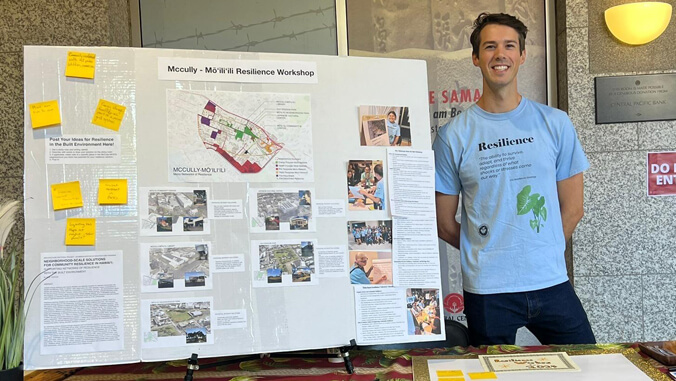
Kapiʻolani Community College has received $125,000 to bolster the resilience of neighborhoods around Lēʻahi (Diamond Head) to natural disasters as part of a larger $500,000 grant from the Federal Emergency Management Agency (FEMA) Building Resilient Infrastructure and Communities (BRIC) Program.
A Kapiʻolani CC’s grant funded initiative called the Center for Resilient Neighborhoods (CERENE) will oversee the funding to support the development of partnerships between community organizations and government agencies to improve disaster preparedness. Kapiʻolani CC‘s student Resilience Corps Leaders, funded by the Hawaiian Electric Company and under the supervision of CERENE Program Coordinator Miku Lenentine, will convene engagement workshops with partners, conduct qualitative assessments of workshop findings, and assist in final reporting. They will also mentor other students interested in the climate resilience of their neighborhoods.
“This project is a great example of how sectors and communities can come together to build resilience to climate change,” said Robert Franco, professor of social sciences at Kapiʻolani CC and head faculty member for CERENE. “By working together, we can create a more sustainable and resilient future for our neighborhoods and islands.”
Solar-powered backup system
The Hawaiʻi Department of Education will use $375,000 of the FEMA–BRIC grant to implement a solar-powered microgrid energy backup system at Kaimukī Middle School. This system will increase the school’s ability to operate independently off the grid during a power outage, supporting activities such as food preparation, refrigeration, device charging and medical equipment usage. It will also make it an ideal logistics and communication center for first responders in the Lēʻahi area during emergencies.
Lenentine added, “CERENE will work with the City and County of Honolulu to develop a plan for replicating the Kaimukī Middle School project at other schools and community centers on the island. We believe that by empowering our communities, we can create a more sustainable and resilient future for all. The Kaimukī Microgrid Solar Energy Project is just one step in that direction.”


